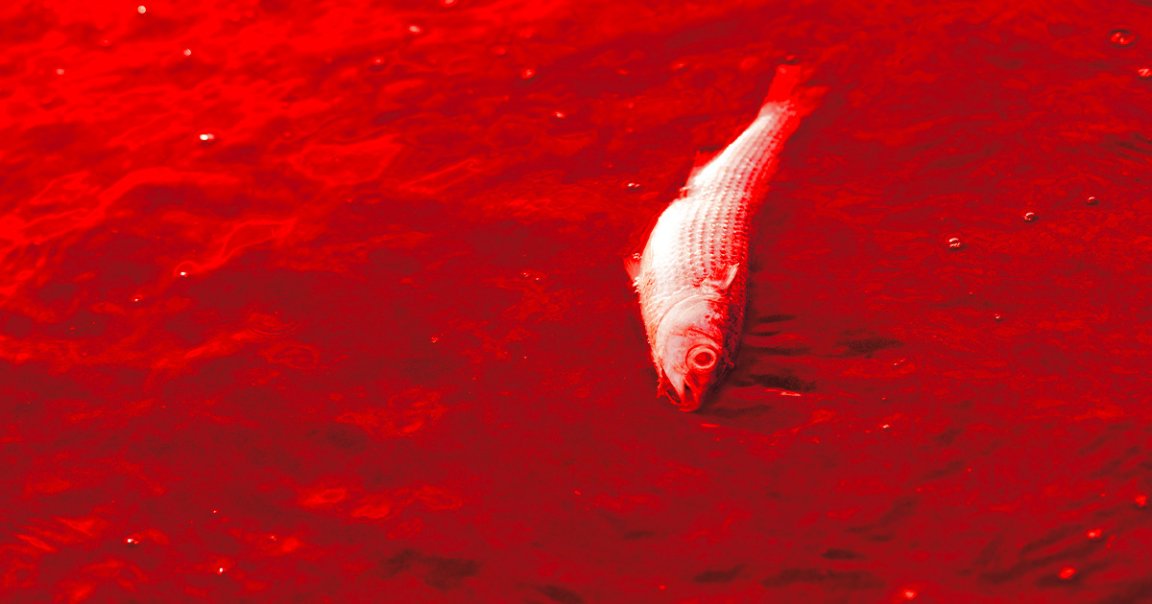
Mass Gilling
A “dead zone” at the bottom of the Gulf of Mexico continues to kill off or drive out aquatic life — and this year it’s grown even bigger, scientists working with the National Oceanic and Atmospheric Administration have found.
Lying off the coast of Louisiana, the oxygen-depleted or hypoxic region is larger than average this year, and is being driven by nutrient-rich discharge from the Mississippi River. It now covers about 6,705 square miles, which is almost the size of New Jersey.
This is the 12th largest the dead zone has ever been in nearly four decades of record keeping, with the largest ever being observed in 2017, at over 8,700 square miles.
While it may not be historic, this latest measurement is still greater than what scientists forecasted earlier this summer, and keeps the dead zone’s five year average size of roughly 4,300 square miles two times above a 2035 reduction target.
“The area of bottom-water hypoxia was larger than predicted by the Mississippi River discharge and nitrogen load for 2024, but within the range experienced over the nearly four decades that this research cruise has been conducted,” Nancy Rabalais, a professor at Louisiana State University and co-chief scientist of the dead zone survey, said in an announcement on Thursday. “We continue to be surprised each summer at the variability in size and distribution.”
Algae Whiz
Dead zones are caused by nutrient pollution, which spurs an overgrowth of algae far beyond sustainable levels. Their huge numbers crowd out sunlight from reaching underwater plants and plankton, and eventually, the algae die off en masse.
When the dead algae float to the bottom, the also take oxygen with them to the grave. This leaves less of the stuff for the fishes and other aquatic life, driving them out of the area in search of more oxygen-rich climes.
For what little marine life that remains, scientists have found that the hypoxia causes changes in fish diets, growth rates, reproduction, and habitat use, NOAA said. In turn, this leaves fewer critters like shrimp available for humans to catch.
Humans are largely to blame for this in the Gulf, though dead zones can sometimes occur naturally. The excess nutrients come from cities and farms, which seep into nearby water sources like the Mississippi, eventually depositing into the Gulf of Mexico.
Deadly Climate
Dead zones are some of the worst horrors that humans visit upon the ocean. Without oxygen, there’s simply no way for marine creatures to thrive.
Worldwide, the total area of ocean dead zones has quadrupled since 1950, one 2018 study found. Because climate change will likely worsen their spread, it’s more important than ever that we keep close tabs on dead zone fluctuations, however minor or major they may be.
“It’s critical that we measure this region’s hypoxia as an indicator of ocean health, particularly under a changing climate and potential intensification of storms and increases in precipitation and runoff,” Nicole LeBoeuf, assistant administrator of NOAA’s National Ocean Service, said in the announcement. “The benefit of this long-term data set is that it helps decision makers as they adjust their strategies to reduce the dead zone and manage impacts to coastal resources and communities.”
More on the ocean: Scientists Say They’ve Detected a Strange Source of Electricity at the Bottom of the Ocean